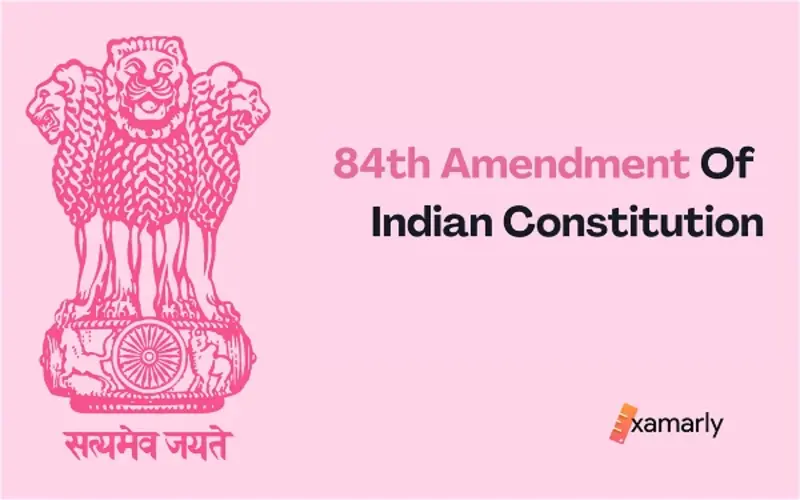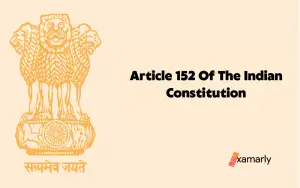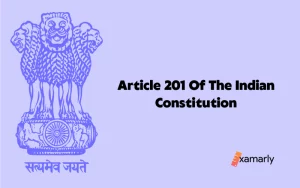The 84th Amendment of the Indian Constitution was important to India’s administrative functioning.
The arrangement of seat allocation in the Lok Sabha and state legislative assemblies was extended for another 25 years.
This was done keeping in mind the outcome of supporting population control measures. According to the 84th Amendment Act, constituency borders remain locked until the first census after 2026, or at least until 2031.
What were all changes brought forth through the Eighty-Fourth Amendment of the Indian Constitution?
What were the ramifications of this change? What was the constitutional amendment procedure like? Read on to learn more.
84th Amendment of the Indian Constitution
The 84th Amendment of the Indian Constitution was brought about on 21 February 2002. It brought the amendment of articles 55, 81, 82, 170, 330, and 332 of the Indian Constitution.
The 84th Amendment of the Indian Constitution extended the bar on the adjustment of seats in the Lok Sabha and State Legislative assemblies for the next 25 years with the same goal of supporting population control measures.
This meant that the 1971 national census population data for the statewide distribution of parliamentary seats would be extended.
This will lead to the freezing or delimitation of Lok Sabha and State Assembly seats up till the first Census after 2026.
The number of Lok Sabha seats and State Assembly seats is based on the 1971 Census, while the current boundaries are based on the 2001 Census.
This means that the Lok Sabha and assembly seats will be constant till the year 2026. Additionally, it demanded that territorial seats in the states be adjusted and rationalized in light of population figures from the 1991 census.
Relatable Article: Powers And Functions Of Lok Sabha and Rajya Sabha
Objects And Reasons
The objectives of the 84th Constitutional Amendment are as follows:
- No new redistricting may take place until the results of the first census taken after the year 2000 are revealed, as required by Articles 82 and 170 (3) of the Constitution. The aim of including such a tangent in the 42nd Amendment Act was to improve family planning standards. The constitutional ban on starting a new delimitation process will expire as soon as the results of the first census after the year 2000 (which has already started) are released.
- The reason for the 84th Amendment of the Indian Constitution is rather complicated and on a grounds of splits. Both proponents and detractors of the idea of new delimitation have been vocal in their demands for and against it. The government recently decided to extend the current freeze on carrying out new delimitation up to the year 2026. This is planned as a driving factor to enable the State Government to pursue beyond family planning norms and look for new agenda for population stabilization in light of the progress of family planning programs and uneven growth of population in various parts of the country.
- The government has also opted to recalibrate and rationalize territorial constituencies in the States, without changing the number of seats assigned to each State in the House of People and Legislative Assemblies of the States, incorporating the Scheduled Castes and Scheduled Tribes constituencies, based on the population estimated at the 1991 census, in order to correct the disproportion produced by uneven population/elector growth.
- In addition, the allocation of seats for SC/ST people in Lok Sabha and the state legislatures will be reviewed. The population estimate from the 1991 census will be used for this calculation.
Constitutional Provisions
Let us look at the basic structure and the special provisions in the amendment of provisos to articles in detail:
- Amendment to Article 55 – According to this amendment “2026” will be used in places within Article 55 where the figure “2000” is used.
- Amendment to Article 81 – Along with the figure “2000” replaced with “2026”, the phrase of clause (3) of the Indian Constitution which refers to the 1971 census shall also be replaced with a factually sound substitute referring to the 1971 census in clause (2) subclause (a) and 1991 census in clause (2) subclause (b).
- Amendment to Article 82 – Here, the figure “2026” replaced the figure “2000”. Further, Article 82 was an amendment wherein the allocation of seats in the House of the Lok Sabha was to be made based on the 1971 census and the allocation of every state into constituencies was to be made based on the 1991 census.
- Amendment to Article 170 – Here, in clause (2), the figures “2026” and “1991” will be used in place of “2000” and “1971”. Along with that, a substitution similar to Article 82 is proposed wherein the readjustment of the total number of seats in the Legislative Assembly of each State will be made based on the 1971 census while that for the division of such State into territorial constituencies will be based on the 1991 census.
- Amendment to Article 330 – Here, we see a substitution of “2000” and “1971” with “2026” and “1991”
- Amendment to Article 332 – In clauses (3A) and (3B), the figure “2026” will replace the figure “2002”
Conclusion
The 84th amendment of the Indian Constitution is a must-learn for all future government servants in public services.
By now you would have become familiar with the concept of delimiting or freezing seat readjustment in Lok Sabha and State Legislatures.
The problems this has created for publishing fresh readjustment of constituencies can only be imagined.
The effect these constitutional provisions of the 84th Amendment will have from time to time on the population figures and the larger administrative realm is something for us to think about.
To learn more about the other amendments to the Indian Constitution, log on to Examarly and read away!
FAQs on the 84th Amendment of the Indian Constitution
What Is The 84th Amendment Of The Constitution Of India?
The constituency lines were set in stone by the 84th Amendment Act of 2001 until the first census after 2026 or, at the very least, after 2031. The 1971 census laid the groundwork for the present Lok Sabha’s seat distribution.
When Was The First Amendment To The Indian Constitution Made?
The first amendment to the Constitution was approved in 1950. The Indian Constitution’s Fundamental Rights clauses were modified in a multitude of aspects by the 1951 Constitution (First Amendment) Act.
It provide means to restrict freedom of speech and expression, advocated for measures to end zamindari, and said unequivocally that the right to equality does not bar the passage of legislation that offers “special consideration” to society’s most disadvantaged groups.
How is the arrangement of seats in the Lok Sabha determined?
A: The arrangement of seats in the Lok Sabha is determined by the population of each state, as determined by the census. The seats are allocated to the states in such a way as to ensure that the ratio of seats to population is as close as possible to equal for all states.
Is the allocation of seats in the Lok Sabha and state legislative assemblies based on equal representation?
No, the allocation of seats in the Lok Sabha and state legislative assemblies is not based on equal representation. It is based on the population of each state or union territory, with a view to ensuring that the representation of each state or union territory reflects its population.
Are the number of seats in the Lok Sabha and state legislative assemblies fixed?
The number of seats in the Lok Sabha is currently fixed at 543, but the number of seats in state legislative assemblies can change based on the recommendations of the State Delimitation Commission.






